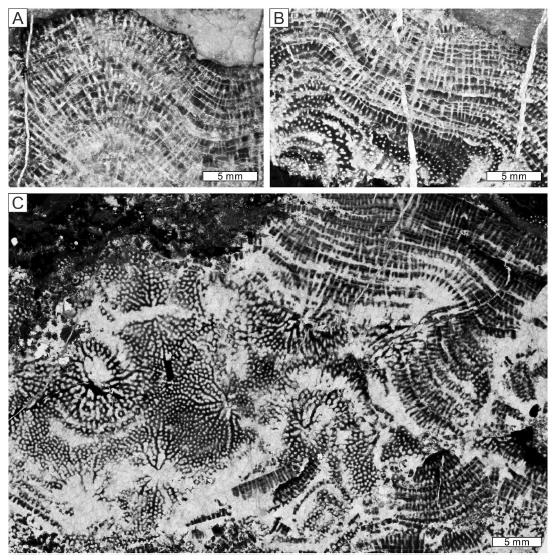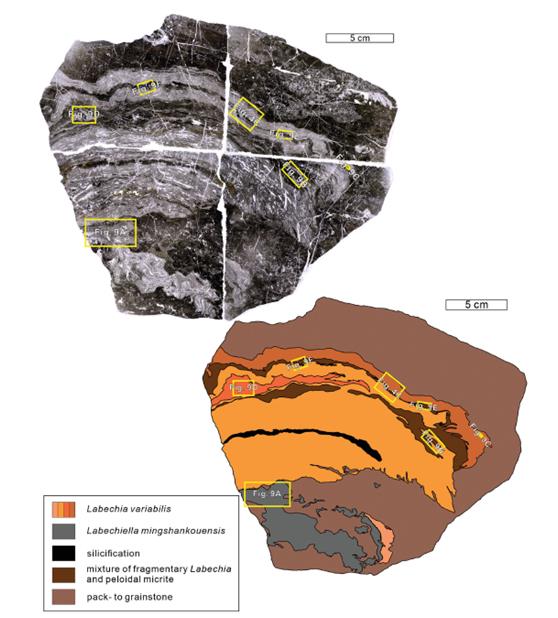Stromatoporoids are hypercalcified sponges that first became important in shallow-marine reefal systems in the Middle Ordovician, continuing as dominant reef components until Late Devonian time. The labechiid group has been regarded as the earliest stromatoporoid-type sponge based on its occurrence in the Floian Stage of the Lower Ordovician in South China. This group diversified substantially in the late Darriwilian of the Middle Ordovician, reaching a total of 12 genera that contributed to the Great Ordovician Biodiversification Event.
Recently, doctoral student Juwan Jeon, Associate Professor LI Qijian, Professor ZHANG Yuandong et al. from Nanjing Institute of Geology and Palaeontology, Chinese Academy of Sciences (NIGPAS) and their collaborator from Brunel University report stromatoporoid fossils, which occur sporadically throughout the Xiaonanhai section, located on a hill close to the Xiaonanhai Reservoir near Anyang City in Henan Province, China.
The results were published in Alcheringa on Jan. 8.
Four labechiid species from the Machiakou Formation are systematically described. These species are major constituents of the Middle Ordovician endemic labechiid assemblage in North China. The Darriwilian labechiid stromatoporoid assemblage of North China represents the highest generic diversity of the Middle Ordovician stromatoporoids globally. A microbioherm is recognised in the Xiaonanhai section, constructed by mutual encrustations of Labechia variabilis and Labechiella mingshankouensis, and is comparable to other microbioherms found in the Middle Ordovician Yeongheung Formation of South Korea. Different stratigraphic ranges, migration pathways and palaeogeographic distributions amongst the Darriwilian labechiid species of North China indicate that their environmental tolerance and migration dispersal behaviour were variable.
This study was jointly supported by the Youth Innovation Promotion Association of CAS, grants from the Strategic Priority Research Program (B) of CAS.
Reference:Jeon, J., Li, Q.J.*, Chen, Z.Y., Liang, K., Stephen, K. & Zhang, Y.D., 2022. Labechiid stromatoporoids from the Middle Ordovician Machiakou Formation of North China and their implications for the early development of stromatoporoids. Alcheringa, 46 (03-04): 219–236. https://doi.org/10.1080/03115518.2022.2130978.

Figure 1 Labechiella mingshankouensis (Ozaki 1938) from the Middle Ordovician Machiakou Formation at the Xiaonanhai section, Anyang County, Anyang, Henan Province, China.

Figure 2 Four contiguous thin sections showing the microbioherm from the Middle Ordovician Machiakou Formation in the Xiaonanhai section, Anyang County, Anyang, Henan Province, China, together with an interpretive drawing of the microbioherm.
Contact:
LIU Yun, Propagandist
Email: yunliu@nigpas.ac.cn
Nanjing Institute of Geology and Palaeontology, Chinese Academy of Sciences
Nanjing, Jiangsu 210008, China
Download:
